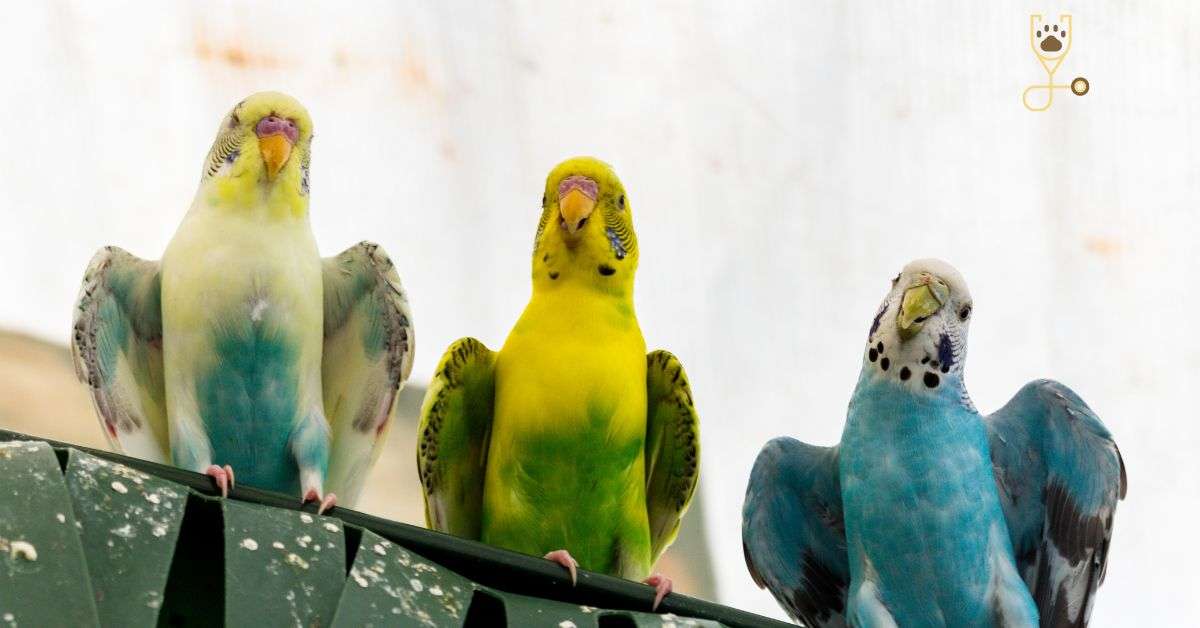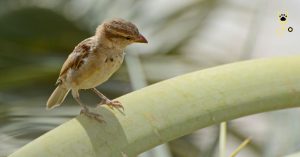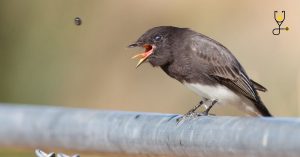Do you own a pet bird? If so, you know that they are amazing creatures that bring joy and happiness into our lives. But did you know that there is a lot of work involved in owning a pet bird? In this guide, we will provide you with amazing information on how to take care of your bird, names, breeds, grooming, health issues, mating, care, how to keep them happy and healthy, and much more. We will also discuss the different types of birds that make good pets and provide information on what to consider before bringing one home. So whether you are a first-time bird owner or just looking for more information, read on for the ultimate guide to pet birds!
Learn more about pet birds:
- 10 Reasons Toucans Make Excellent Pets
- Can Crows Talk? And if So, What Are They Saying?
- Everything You Need to Know About Pet Peacocks
- How Feral Peacocks Stay Alive in Urban Neighborhoods
- How to Get Wild Birds Like Blue Tits to Nest in the Garden
- Ravens, Magpies, and Crows: The Smartest Birds
- Why Budgies Are Better in Pairs
- Do Geese Make Good Pets?
- Easy Hacks to Help Mess-Proof Your Bird Cage!
Scientific Hierarchy of Birds
phylum: Chordata
class: Aves
order: Passeriformes
family: Psittacidae
genus: Specific to the species of bird
Best Names of Pet Birds all over the world
1) Baby
2) coco
3) buddy
4) fifi
5) lulu
6) jumpy
7) Tweetie
8) Sammy
9) ]Polly
10) dixie
11) kiki
12) Albert
13) beaker
14) charlie
15) Egbert
16) gizmo
17) homer
18) mighty joe young
19) Myra
20) Nemo
21) pinky
22) precious
23) sandy
24) thumper
25) winky
26) yogi
27) ziggy
28) boomer
29) buttercup
30) cutie pie
31) Dudley
32) Egbert
33) fluffy
34) goldie
35) lucky
36) maggie
37) max
38) molly
39) nutty
40) oscar
41) peanut
42) perky
43) pixie
44) princess
45) Reggie
46) rover
47) Sheba
48) sugar
49) taffy
50) Trixie
These are some of the best names for pet birds from all over the world. Each name has a special meaning and is sure to make your feathered friend feel loved and appreciated.
Different types of birds that make good pets
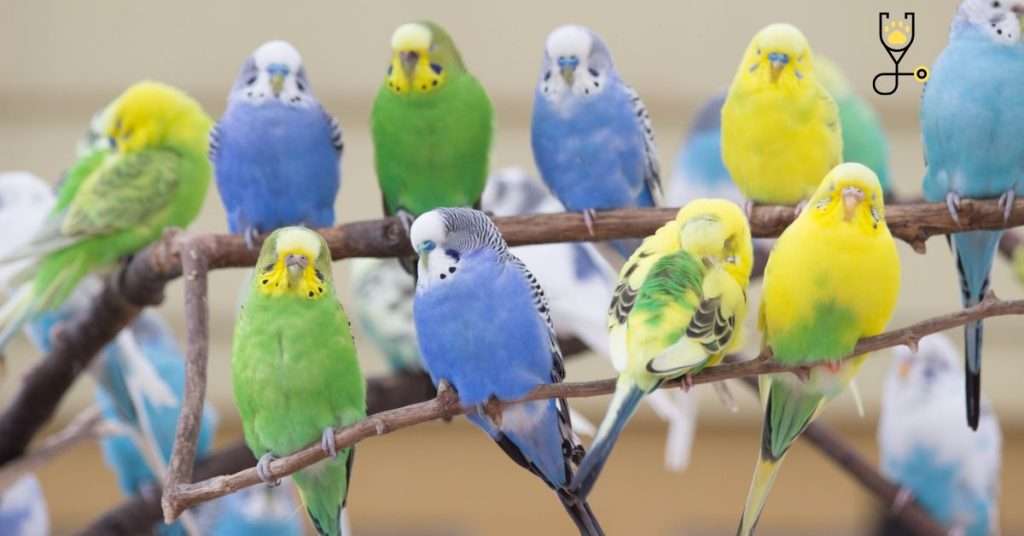
There are many different types of birds that make good pets. Some of the most popular pet birds include parakeets, budgies, cockatiels, lovebirds, and finches. Each type of bird has its own unique personality and needs, so it is important to do your research before choosing a bird.
Parakeets
Parakeets are small, active birds that are very social. They need plenty of space to move around and play. Parakeets also like to chew on things, so it is important to provide them with plenty of toys and perches.
Budgies
Budgies are similar to parakeets but are slightly larger. They are also very social creatures that need plenty of space to move around. Budgies are also known for being playful and love to chew on things.
Cockatiels
Cockatiels are larger than parakeets and budgies. They are very social birds that need plenty of to move around. Cockatiels also like to chew on things, so it is to provide them with plenty of toys and perches.
Lovebirds
Lovebirds are small, active birds that are very social. They need plenty of space to move around and play. Lovebirds also like to chew on things, so it is important to provide them with plenty of toys and perches.
Finches
Finches are small, active birds that are very social. They need plenty of space to move around and play. Finches also like to chew on things, so it is important to provide them with plenty of toys and perches.
Amazing breeds of birds all over the world
There are so many amazing breeds of birds all over the world. It’s truly astounding to see the variety in size, color, and shape that these creatures come in. From the tiny hummingbird to the massive ostrich, there is a bird out there to suit everyone’s fancy.
Some of the most popular bird breeds include(country-wise)
USA-Bird breeds
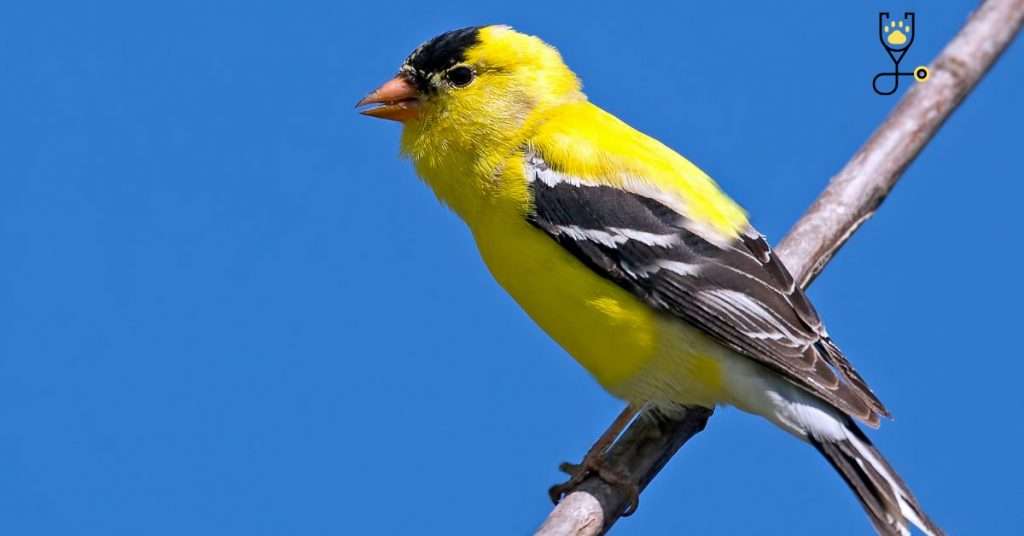
1) American Goldfinch
2) Bald Eagle
3) Carolina Chickadee
4) Northern Cardinal
5) Pileated Woodpecker
6) Ruby-Throated Hummingbird
7) Tufted Titmouse
8) Western Meadowlark
9) Yellow-Bellied Sapsucker
10) Blue Jay
11) House Finch
12) American Raven
13) Mallard Duck
14) European Starling
15) House Sparrow
16) Rock Pigeon
Germany-Bird breeds
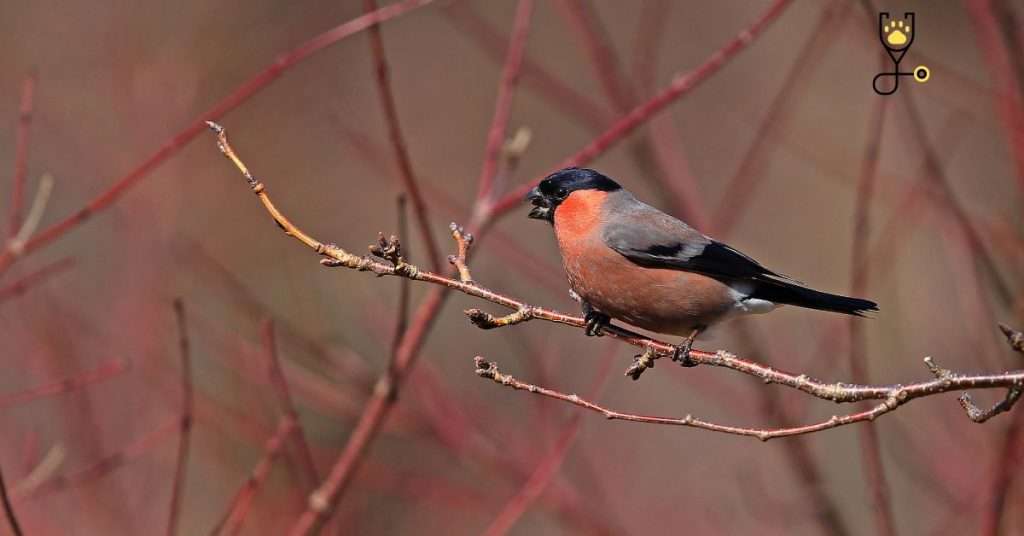
1. Eurasian blue tit
2. Common blackbird
3. Eurasian Bullfinch
4. European goldfinch
5. Great tit
6. Barn swallow
7. Coal tit
8. Eurasian jay
9. Robin redbreast
10. Blue-throated pipit
11. White wagtail
12. Waxwing
13. Tree sparrow
14. Chaffinch
15. Goldcrest
Brazil-Bird breeds
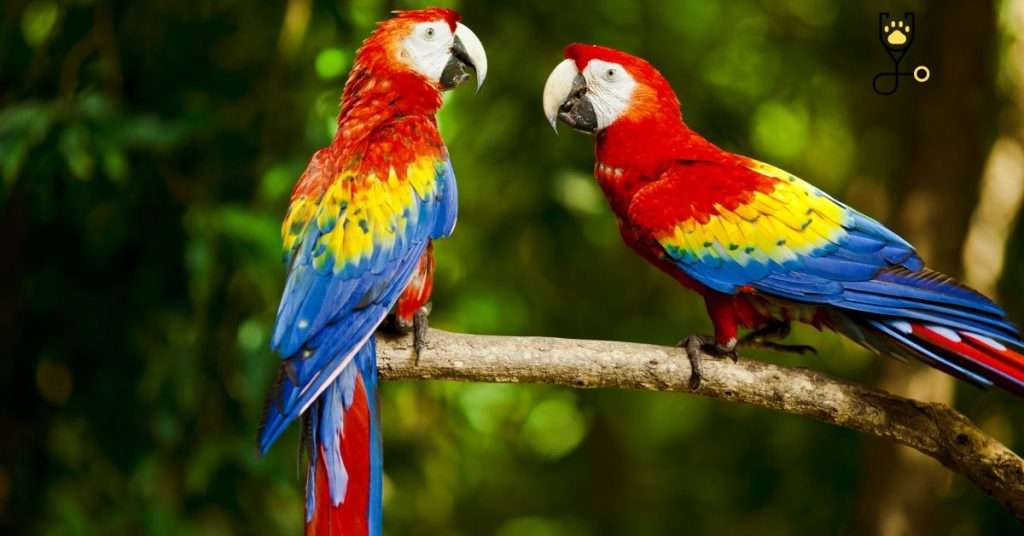
1) Hyacinth Macaw
2) Blue-and-yellow macaw
3) Scarlet macaw
4) Red-and-green macaw
5) White-eyed parakeet
6) Black-hooded Parakeet
7) Yellow-chevroned parakeet
8) Plain parakeet
9) Blue-winged macaw
10) Military macaw
11) Green-winged macaw
12) Blue-fronted amazon
13) Lilacine amazon
14) Red-lored amazon
15) Yellow-shouldered amazon
Japan-Bird breeds
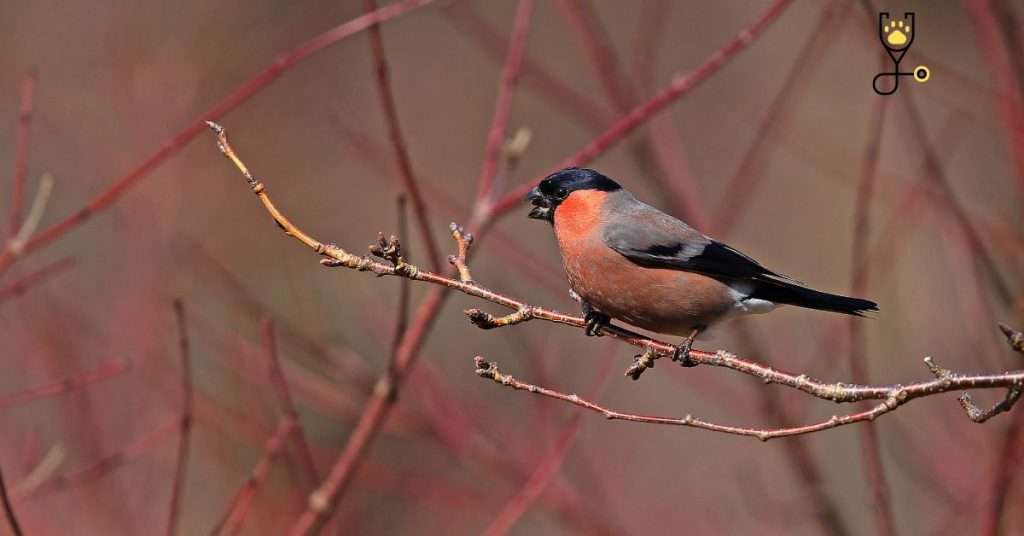
1) Japanese white-eye
2) Eurasian bullfinch
3) Crimson-faced loci HLA
4) Japanese grosbeak
5) Yellow-breasted bunting
6) Black kite
7) Oriental greenfinch
8) Eurasian jay
9) Bohemian waxwing
10) Pine grosbeak
China-Bird breeds
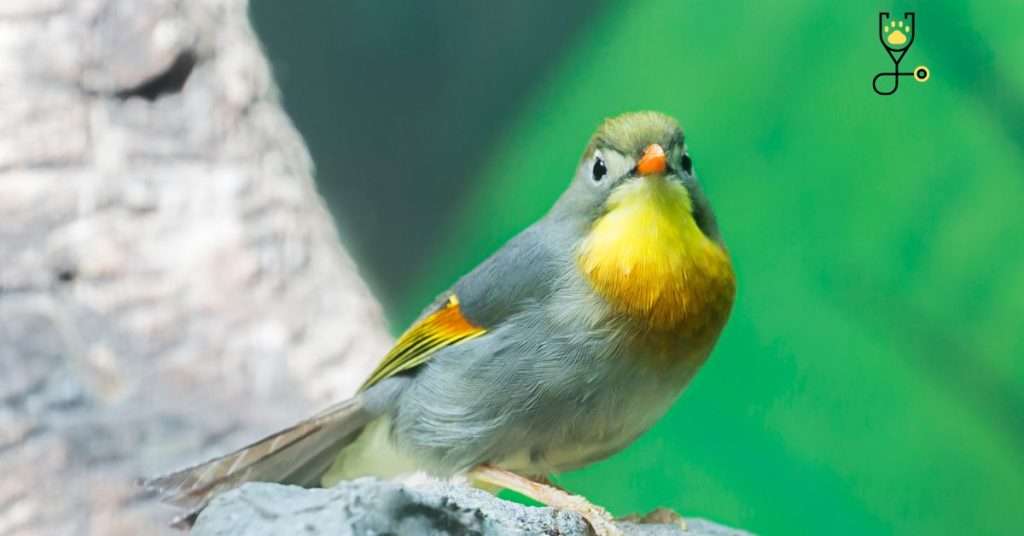
1. Red-billed leiothrix
2. Sichuan jay
3. Chinese white-browed rosy finch
4. Black-faced bunting
5. White-Eared Pheasant
6. Chinese sparrowhawk
7. Eurasian wryneck
8. Chinese grosbeak
9. Oriental hobby
10. Red-whiskered bulbul
11. White-throated redstart
12. Common kestrel
Australia-Bird breeds
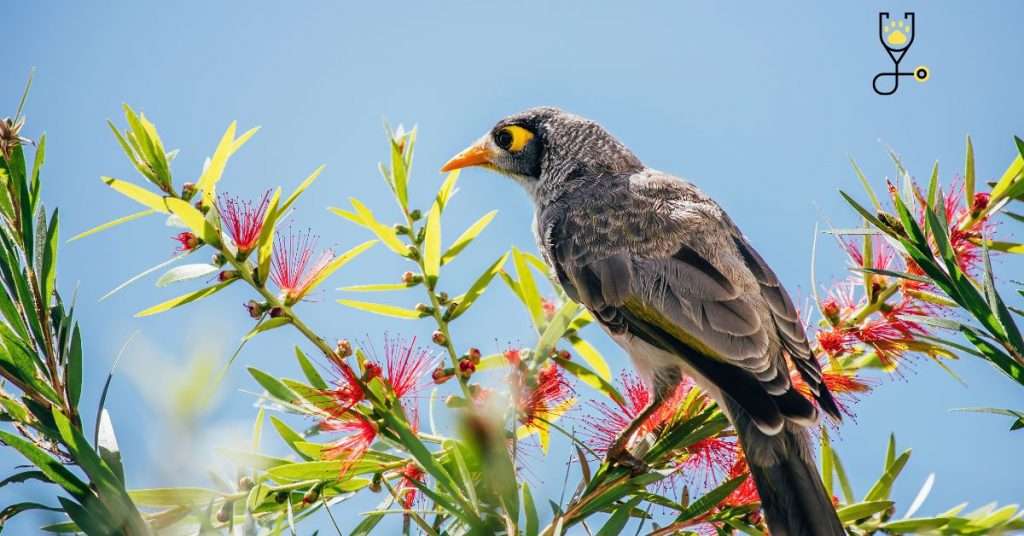
1) Australian magpie
2) Noisy miner
3) Rainbow lorikeet
4) Sulphur-crested cockatoo
5) Little corella
6) Majestic honeyeater
7) Australian wood duck
8) Galah
9) Crimson Rosella
10) Yellow-tailed black cockatoo
11) Superb fairywren,
12) Blue-faced honeyeater
The behavior of pet birds
Birds are interesting and entertaining pets. They come in a wide variety of colors, shapes, and sizes, and each has its own personality and behavior.
Some birds are very active and playful, while others are more laid-back and content to just watch the world go by. There are also those that fall somewhere in between these two extremes.
No matter what type of bird you have, there are a few things you should know about their behavior in order to keep them healthy and happy.
1) Birds are social creatures and need interaction with their owners on a daily basis.
2) Birds often become attached to one person in the family and maybe shy around others.
3) Birds like to play and explore their environment.
4) Some birds are prone to nipping or biting when they get excited or scared.
5) Birds need a variety of foods in their diet to stay healthy.
6) Birds require a lot of sleep and should have a dark, quiet place to sleep in at night.
7) Birds are very clean animals and spend a lot of time grooming themselves.
8) Birds are very curious creatures and will often try to nibble on anything that catches their eye.
9) Birds are very sensitive to changes in their environment and can become stressed easily.
10) Birds can be loud and messy, so it’s important to have realistic expectations before getting one as a pet.
Birds make great pets for people of all ages and lifestyles. However, it’s important to do your research before getting a bird to make sure you’re prepared for the commitment.
- Parrot Behaviors: Your Quaker Parrots Health
- How I Gained My Lovebird Trust (Let See 2022)
- Bathing Tips For Lovebirds (Best Tips For Lovebirds 2022)
Feeding And caring tips for pet birds
Pet birds are wonderful, intelligent creatures that can bring much joy to their owners. However, they require special care and attention in order to stay healthy and happy.
There are a variety of different food options available for pet birds, and it is important to consult with a veterinarian or experienced bird owner to determine what type of diet is best for your individual bird.
Common food for pet birds
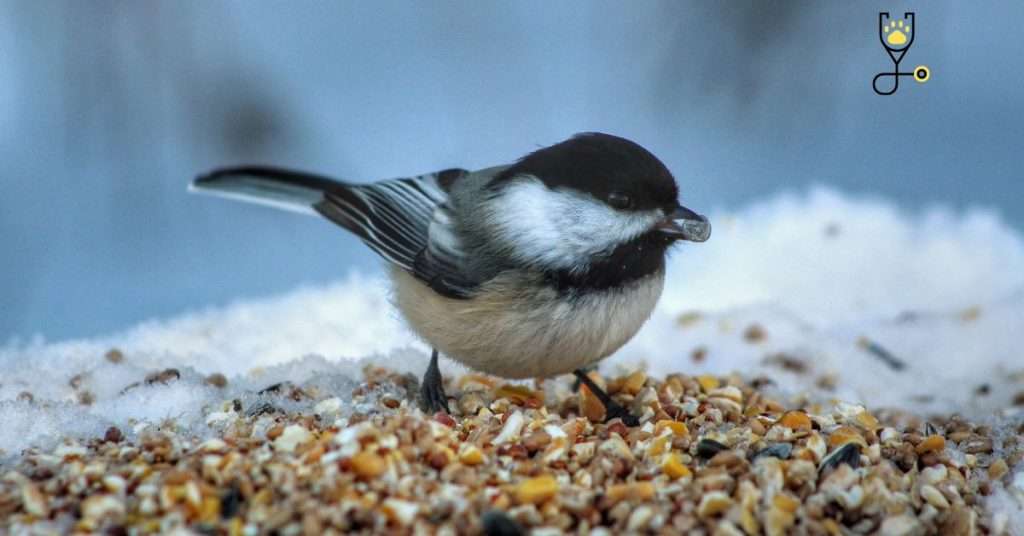
The common foods for birds include:
-Fresh fruits and vegetables
Fresh fruits and vegetables should make up a large part of your bird’s diet. Most birds enjoy eating a variety of different fruits and vegetables, so it is important to offer a variety each day. It is also important to wash all fruits and vegetables thoroughly before feeding them to your bird to remove any pesticides or other chemicals that may be present.
-Seeds
Seeds are another common type of food for pet birds. There are many different types of seed mixes available, or you can purchase individual seeds. It is important to choose a good quality seed mix that does not contain any fillers such as sand or dirt. Seeds should make up a smaller portion of your bird’s diet than fruits and vegetables.
-Nuts
Nuts are another option that can be given to pet birds. Nuts contain a high-fat content, so they should only be given in small amounts. In addition, it is important to remove the shells of nuts before giving them to your bird to prevent choking.
-Pellets
Pellets are a type of food that is specifically formulated for pet birds. Pellets contain all of the nutrients that your bird needs in order to stay healthy, and they should make up the majority of your bird’s diet. There are many different brands and types of pellets available, so it is important to consult with a veterinarian or experienced bird owner to determine which type is best for your individual bird.
-Grit
Grit is a substance that is composed of small stones that help the bird grind food in its gizzard. Grit is not digested by the bird and is excreted along with the waste. Grit should be available at all times for your bird to peck at as it needs it.
-Water
Water is an essential part of your bird’s diet, and it should have access to fresh water at all times. It is important to clean and change your bird’s water dish daily to prevent the growth of bacteria. In addition, you should avoid using tap water for your bird as it may contain chemicals that can be harmful to them. Instead, use filtered or distilled water.
Bird Feeding Tips
-Offer a variety of fruits, vegetables, seeds, nuts, and pellets to your bird each day.
-Wash all fruits and vegetables thoroughly before feeding them to your bird.
-Remove the shells from the nuts before giving them to your bird.
-Provide grit for your bird to peck at as needed.
-Clean and change your bird’s water dish daily.
-Use filtered or distilled water for your bird.
Birds caring tips
-Provide a clean cage for your bird. A dirty cage can harbor bacteria and other particles that can be harmful to your bird’s feathers.
-Include perches and toys in the cage for your bird to interact with. Boredom can lead to feather picking and other destructive behaviors.
-Clean the cage regularly to remove dirt and debris.
-Take your bird to the vet regularly for checkups and vaccinations.
-Brush your bird’s feathers regularly with a soft brush. This will help remove any dirt or debris that may be trapped in the feathers.
Learn More: How to Take Care of Mandarin Ducks
How to groom your pet bird?
Grooming your pet bird is an important part of keeping them healthy and happy. Here are some tips on how to groom your pet bird:
-Bathe your bird regularly. Birds enjoy taking baths and it helps keep their feathers clean and free of debris.
-Trim your bird’s nails regularly. Overgrown nails can make it difficult for your bird to perch and can cause pain.
-Trim your bird’s beak regularly. An overgrown beak can make it difficult for your bird to eat and can cause injury.
-Brush your bird’s feathers regularly. This will help remove any dirt or debris that may be trapped in the feathers.
-Take your bird to the vet regularly for checkups and vaccinations.
Learn More: How to Maintain Your Parrot Nails (Dremel vs. Nail Clipper)
Common diseases in pet birds and treatments
As bird owners, it is important to be aware of the various diseases that can affect our feathered friends. While some diseases are more common in certain species of birds, others can affect any type of bird. Here are some of the most common diseases in pet birds and treatments for each:
1. Respiratory infections
Respiratory infections are one of the most common diseases in pet birds. These can be caused by bacteria, viruses, fungi, or even parasites, and can range from mild to deadly. Symptoms of respiratory infections include sneezing, wheezing, runny nose, increased mucus production, and lethargy. In severe cases, birds may have difficulty breathing and may even die.
Treatment for respiratory infections will vary depending on the cause but may include antibiotics, anti-viral medications, or anti-fungal medications. In some cases, hospitalization and supplemental oxygen may be necessary.
2. Gastrointestinal problems
Gastrointestinal problems are another common issue in pet birds. These can be caused by bacteria, viruses, parasites, or even foodborne illnesses. Symptoms of gastrointestinal problems include diarrhea, vomiting, weight loss, and lack of appetite. In severe cases, birds may become dehydrated and may even die.
Treatment for gastrointestinal problems will vary depending on the cause but may include antibiotics, anti-viral medications, anti-parasitic medications, or probiotics. In some cases, hospitalization and fluid therapy may be necessary.
3. Feather problems
Feather problems are a common issue in pet birds, particularly those that are not kept in optimal conditions. Poor nutrition, lack of exercise, and inadequate cage size can all lead to feather problems. Symptoms of feather problems include poor plumage, bare patches, and self-mutilation.
Treatment for feather problems will vary depending on the cause but may include dietary supplements, increased exercise, and a larger cage. In some cases, feathers may need to be removed surgically.
Learn More: What to Do If Your Parrot Has a Broken Blood Feather
4. Infectious diseases
Infectious diseases are a major concern in pet birds, as they can be easily spread to other birds and even to humans. Some of the most common infectious diseases in birds include avian influenza, Newcastle disease, and psittacosis. Symptoms of these diseases vary depending on the virus but can include respiratory distress, diarrhea, lethargy, and even death.
Treatment for infectious diseases will vary depending on the cause but may include antibiotics, anti-viral medications, or isolation from other birds. In some cases, there is no treatment available and the bird will need to be euthanized.
5. Giardiasis
Giardiasis is a parasitic infection that can affect the gastrointestinal tract of birds. It is most commonly spread through contaminated water, and can also be spread through contact with infected feces. Symptoms of giardiasis include diarrhea, vomiting, weight loss, and dehydration. In severe cases, birds may die from the infection.
Treatment for giardiasis will typically include anti-parasitic medications. In some cases, hospitalization and fluid therapy may also be necessary.
6. Viral disease
There are many different types of viral diseases that can affect birds. Some of the most common include avian influenza, Newcastle disease, and psittacosis. Symptoms of these diseases vary depending on the virus but can include respiratory distress, diarrhea, lethargy, and even death.
Treatment for viral diseases will vary depending on the cause but may include antibiotics, anti-viral medications, or isolation from other birds. In some cases, there is no treatment available and the bird will need to be euthanized.
Read More: How to Be Prepared for Emergencies With Your Parrot
How to Prevent Common Diseases in Pet Birds
The best way to prevent common diseases in pet birds is to keep them healthy and maintain a clean environment. Some specific things you can do to help prevent disease include:
– Feed your bird a high-quality diet and make sure they have access to fresh water at all times.
– Keep their cage clean and free of debris.
– Give them plenty of opportunities to exercise and play.
– Take them to the vet for regular checkups and vaccinations.
– quarantine new birds before introducing them to your existing flock.
Birds-Importance of play and sports
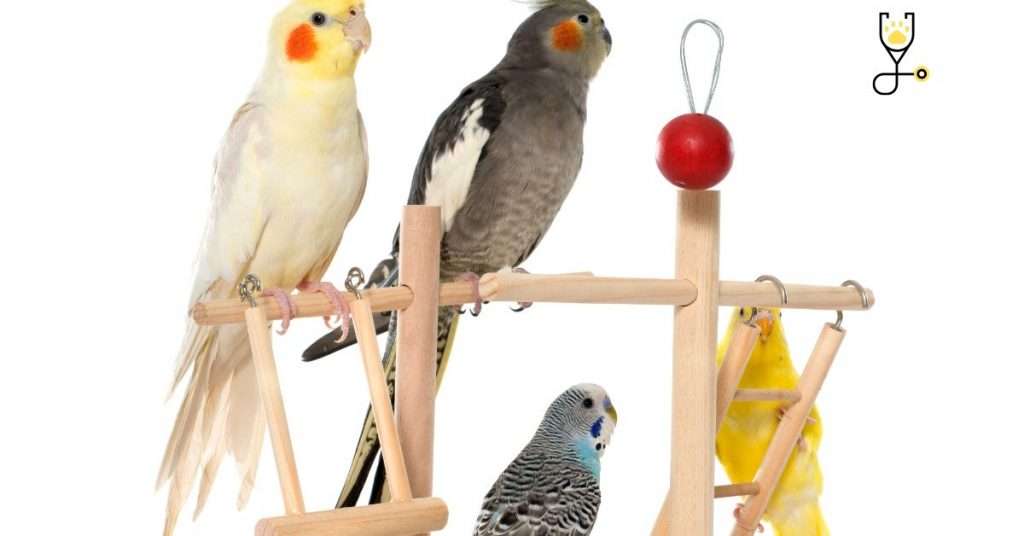
It has been said that play is a child’s work. And there is truth to this statement, as play is essential to a child’s physical, mental, and emotional development. But what about birds? Do they need to play too?
The answer is yes! Play is just as important for birds as it is for humans. Not only does play help birds physically, but it also provides them with the opportunity to socialize and explore their environment.
Physical Development
Birds are built for flying, so it’s no surprise that they love to fly! Flying is not only great exercise for birds, but it also helps them develop their muscles and coordination. In addition to flying, chasing each other around or playing with toys also helps birds stay physically fit.
Mental Development
Birds are very intelligent creatures and need stimulation to keep their minds active. Play provides them with the opportunity to problem-solve and figure out new things. It also helps them learn about their environment and the other animals around them.
Social Development
Birds are social creatures and need interaction with others to stay happy and healthy. Playtime gives them a chance to interact with other birds, form bonds, and build relationships. It also helps them practice important social skills like communication and cooperation.
Exploration
Playtime is also a great opportunity for birds to explore their environment. They can fly to new heights, chase after insects, or play with new toys. This exploration helps them learn about their world and figure out what they like and don’t like.
Play toys for birds
– swings
– ladders
– mirrors
– bells
– balls
– chew toys
– foraging toys
– nesting materials
Providing your bird with toys and opportunities to play is important to its overall health and well-being. Not only will they have more fun, but they’ll also be getting the exercise and mental stimulation they need to stay healthy and happy.
How to train your pet bird?
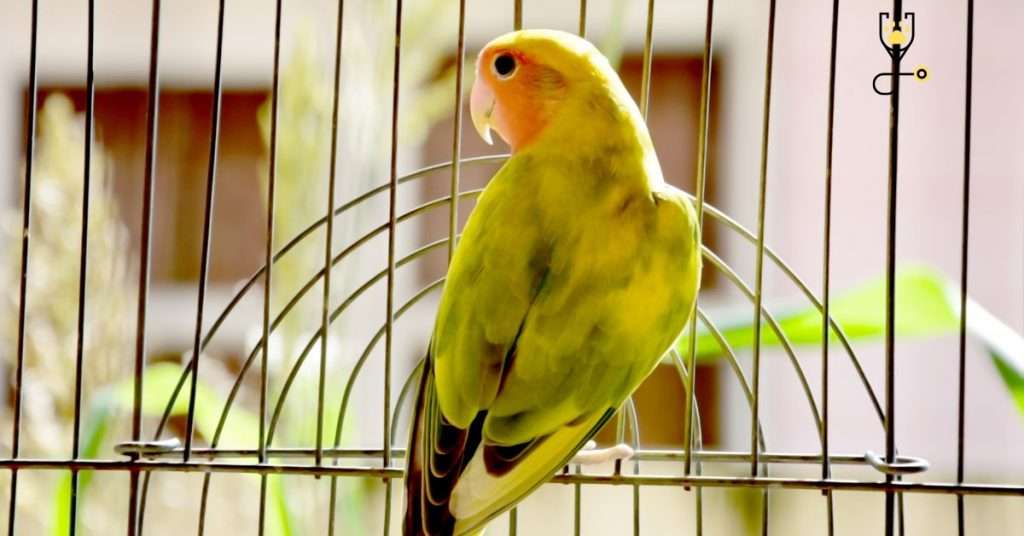
Birds are intelligent creatures and can be trained to do a variety of tricks. The most important thing to remember when training your bird is to be patient and consistent. Here are a few tips to get you started:
1. Choose a quiet place to train your bird where there are no distractions.
2. Start with simple commands such as “step up” or “come here.”
3. Use positive reinforcement such as treats or praise to reward your bird for following your commands.
4. Be patient and don’t get frustrated if your bird doesn’t seem to be getting it at first. Just keep at it and they’ll eventually catch on.
5. Have fun! Training should be enjoyable for both you and your bird.
With a little patience and effort, you’ll be able to train your bird to do all sorts of fun tricks. Not only will you bond with your feathered friend, but you’ll also have a great time in the process.
Learn More: Top 10 Best Talking Parrots
Mating and pregnancies in pet birds
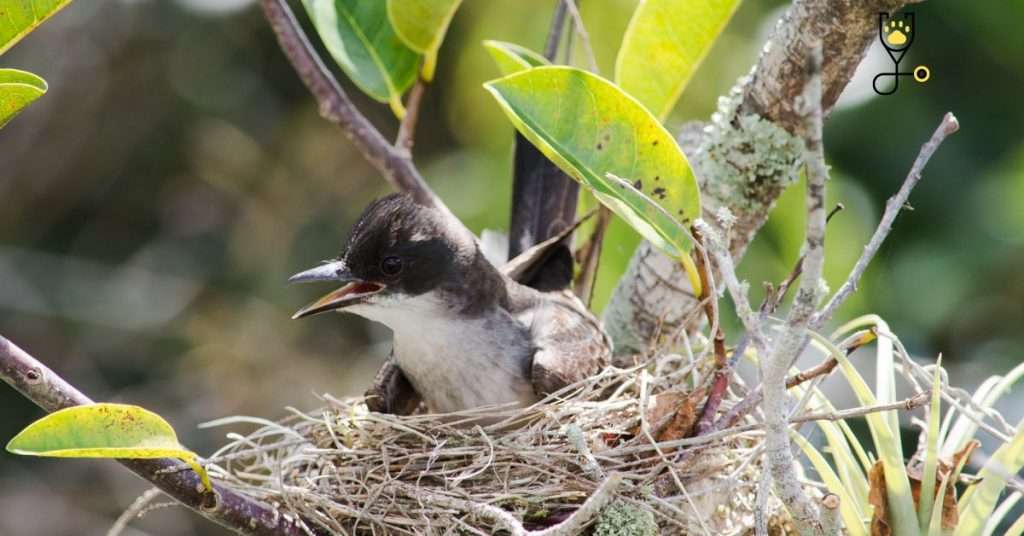
Birds are not like mammals where the male and female must have sexual intercourse in order for the female to become pregnant. Instead, birds mate by touching their cloacas together. The cloaca is an opening at the base of the tail feathers through which they excrete wastes and also where the reproductive organs are located.
When a male bird wants to mate with a female, he will often start by performing a courtship dance or song to catch her attention. If she is interested, she will respond back with her own signals. Once they have established interest in each other, they will face each other and touch their cloacas together. This process is called “cloacal kissing.”
During cloacal kissing, the male will transfer his sperm into the female’s reproductive tract. The female then stores the sperm in her oviduct until she is ready to lay her eggs. Once the eggs are fertilized, they will continue to travel down the oviduct and be laid in a nest.
The length of time it takes for a bird to go from mating to laying her eggs can vary depending on the species. Some birds may lay their eggs within a few days, while others may take several weeks. For example, parrots typically mate during the springtime and will lay their eggs a month or so later.
After the eggs are laid, the female will incubate them for about two weeks before they hatch. Once the chicks hatch, they are helpless and completely dependent on their parents for food and shelter.
Mating and pregnancy are relatively simple processes for pet birds, but there are a few things you should know to help keep your bird healthy during this time. First, it is important to make sure that your bird has a good diet during mating and pregnancy as she will need extra nutrients to support herself and her developing chicks.
You should also make sure that your bird has a nest box or some other type of safe, comfortable place to lay her eggs. And finally, you should avoid handling your bird too much during this time as it can be stressful for her. If you have any questions about mating or pregnancy in pet birds, please talk to your veterinarian.
What is the cloaca?
The cloaca is an opening at the base of the tail feathers from which birds excrete wastes and also where the reproductive organs are located. When two birds mate, they touch their cloacas together in a process called “cloacal kissing.” During cloacal kissing, the male bird transfers his sperm into the female’s reproductive tract.
What is the oviduct?
The oviduct is a tube in the female bird’s reproductive tract through which eggs travel from the ovary to the uterus. Once the eggs are fertilized by the sperm, they continue to travel down the oviduct and are eventually laid in a nest.
How long does it take for a bird to go from mating to laying eggs?
The length of time it takes for a bird to go from mating to laying her eggs can vary depending on the species. Some birds may lay their eggs within a few days, while others may take several weeks. For example, parrots typically mate during the springtime and will lay their eggs a month or so later.
After the eggs are laid, the female will incubate them for about two weeks before they hatch. Once the chicks hatch, they are helpless and completely dependent on their parents for food and shelter.
What should I do to help my bird during mating and pregnancy?
First, it is important to make sure that your bird has a good diet during mating and pregnancy as she will need extra nutrients to support herself and her developing chicks. You should also make sure that your bird has a nest box or some other type of safe, comfortable place to lay her eggs. And finally, you should avoid handling your bird too much during this time as it can be stressful for her. If you have any questions about mating or pregnancy in pet birds, please talk to your veterinarian.
Bird’s Adopting and purchasing
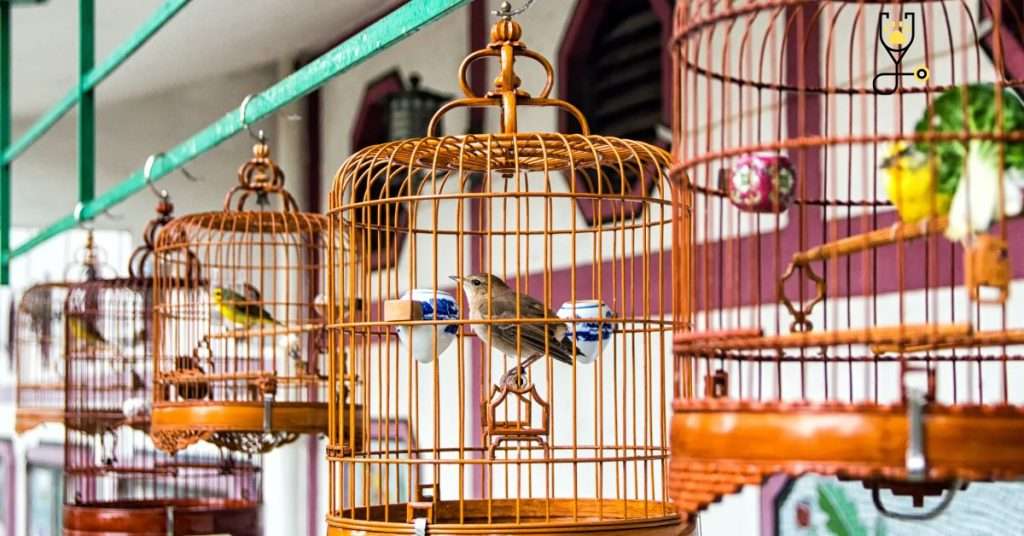
When you are thinking about getting a bird as a pet, there are a few things you should consider before making your purchase. First, you need to decide what type of bird you would like. There are many different types of birds available as pets, from parakeets to macaws. Once you have decided on the type of bird you would like, you need to find a reputable breeder or adopter.
- There are many benefits to adopting a bird instead of purchasing one from a pet store. Adopting a bird means that you are giving a home to a bird that may have otherwise been euthanized. When you purchase a bird from a pet store, you are supporting the demand for birds in the pet trade, which contributes to the problem of bird trafficking.
- Before you adopt or purchase a bird, you should do your research to make sure that you are prepared to provide the bird with everything it needs. Birds are very sensitive creatures and require a specific diet, housing, and level of care. If you are not prepared to provide a bird with everything it needs, then adopting or purchasing one is not the right decision for you.
- If you are prepared to provide a bird with everything it needs, then the next step is to find a reputable breeder or adopter. There are many different ways to find a reputable breeder or adopter, such as asking your veterinarian or contacting a local bird club. Once you have found a reputable source, you can be sure that you are getting a healthy bird that has been raised in a safe and humane environment.
Learn More: The Essentials of Owning a Bird
7 Things You Should Know Before Buying a Pet Bird
Conclusion
When it comes to owning a bird as a pet, there are pros and cons to consider. On the one hand, birds can be intelligent and entertaining companions. They can also help teach children responsibility. On the other hand, birds require a lot of care and attention, and they can be messy. Ultimately, the decision of whether or not to get a bird as a pet is a personal one. If you think you can handle the challenges of owning a bird, then go for it!

